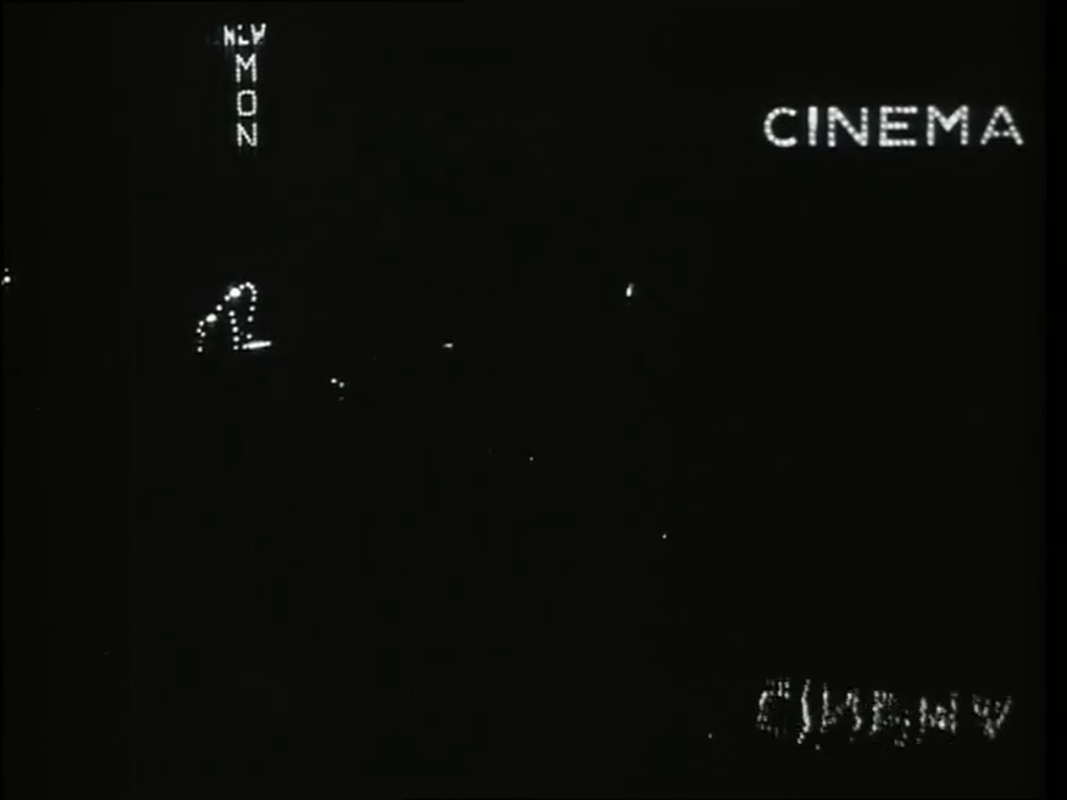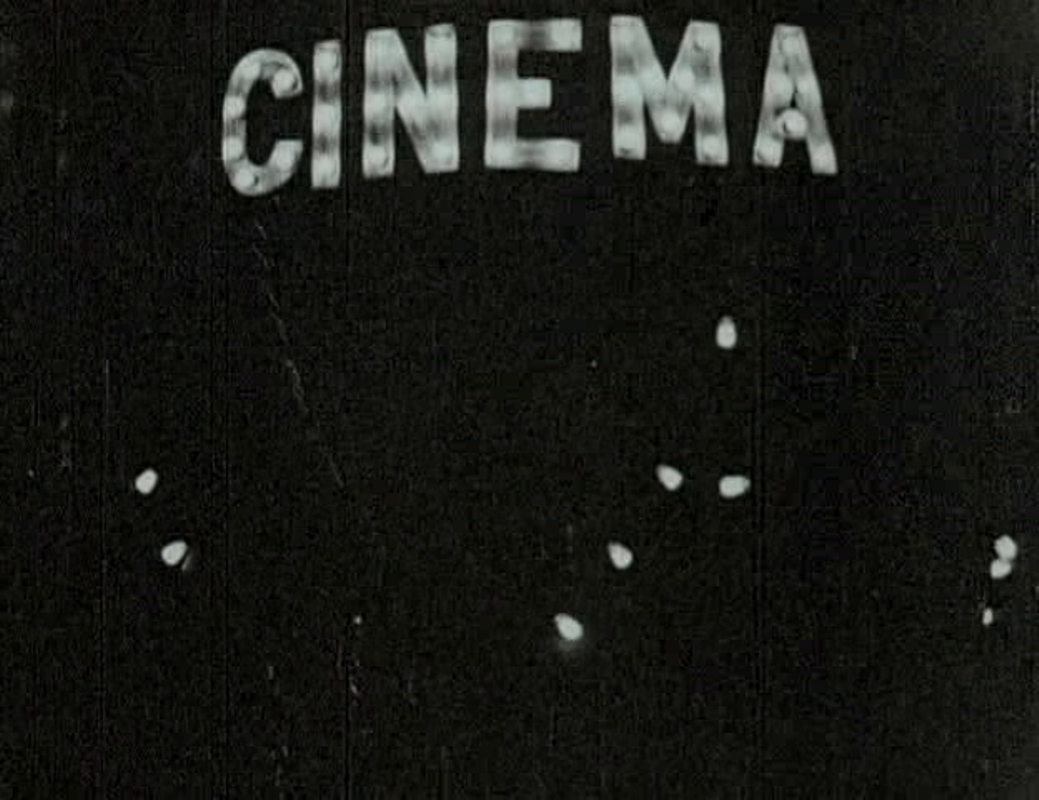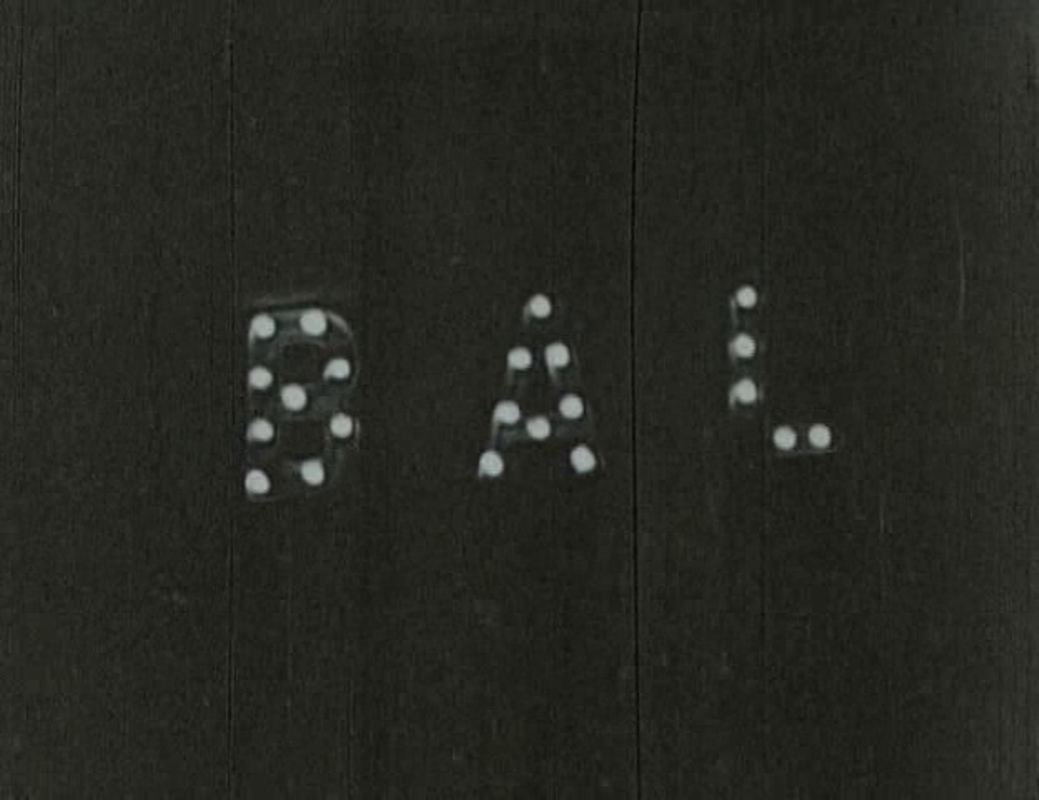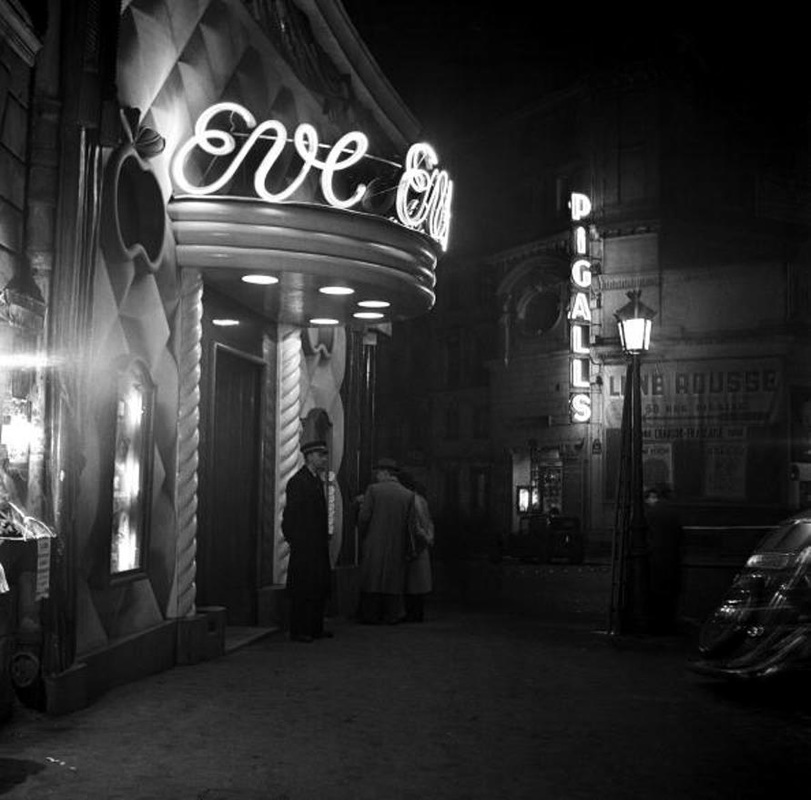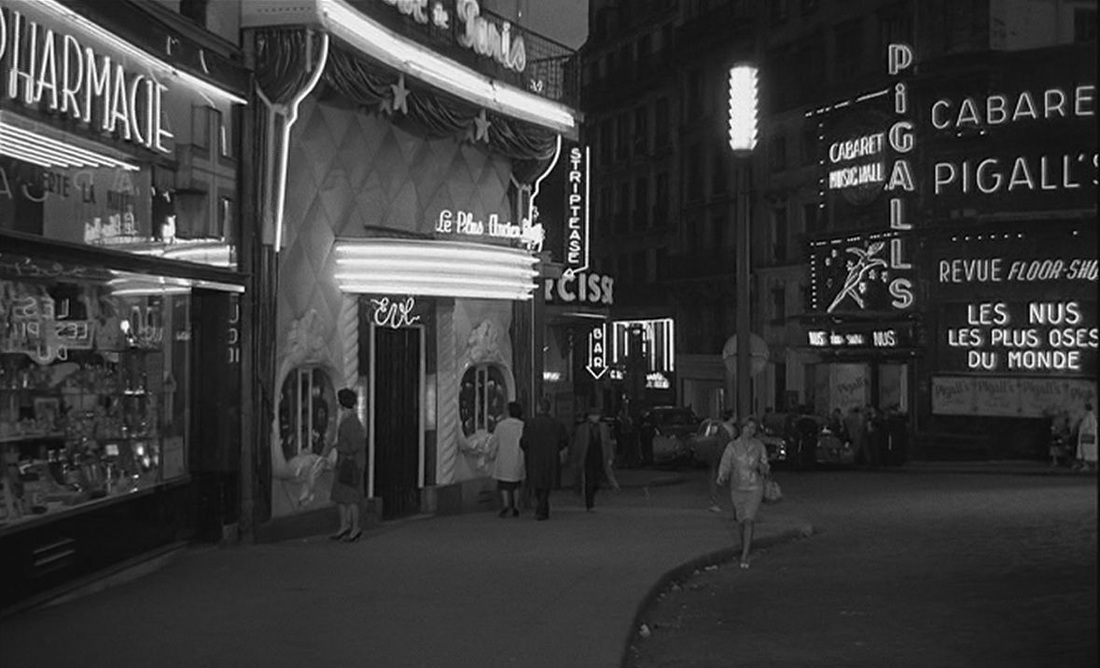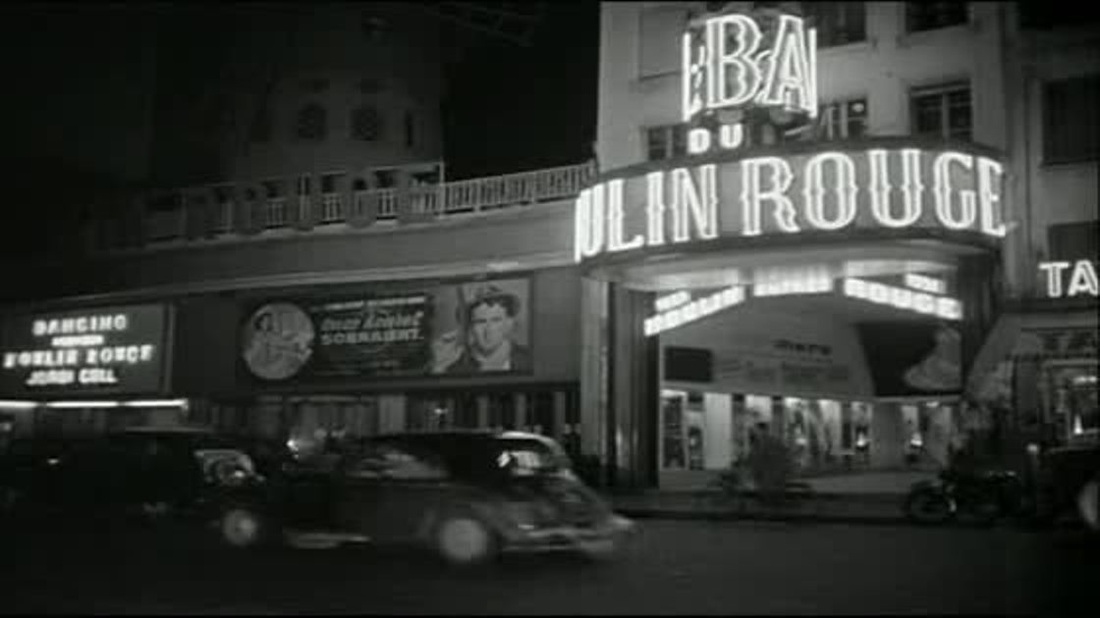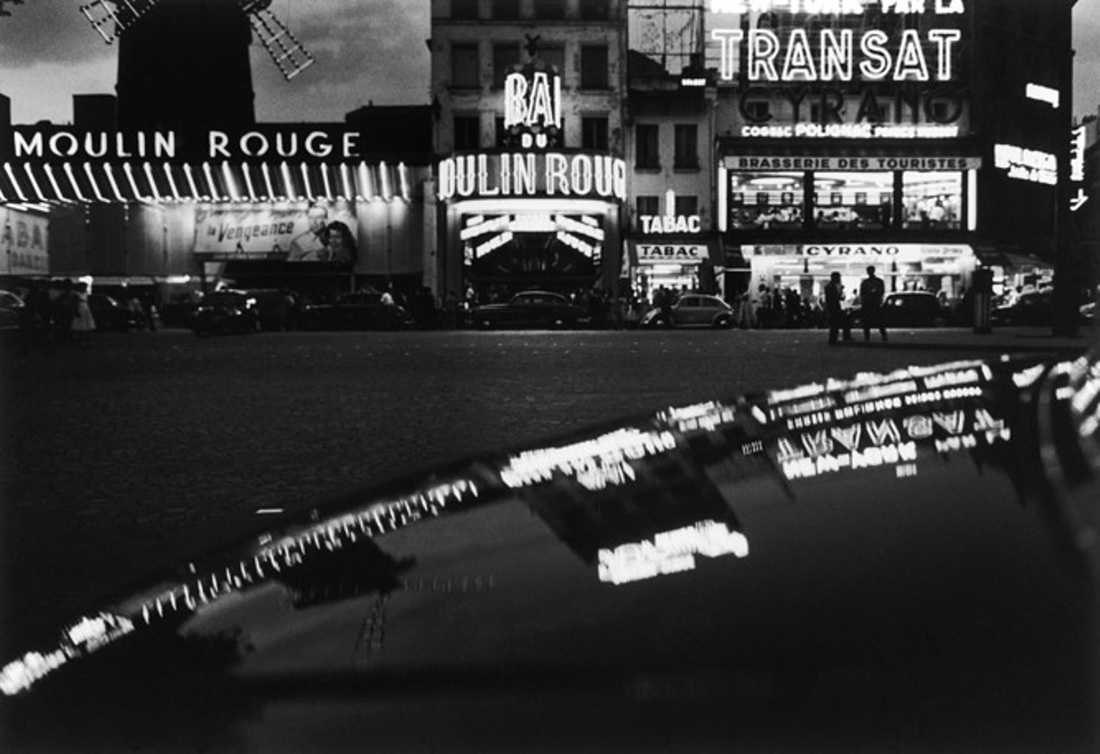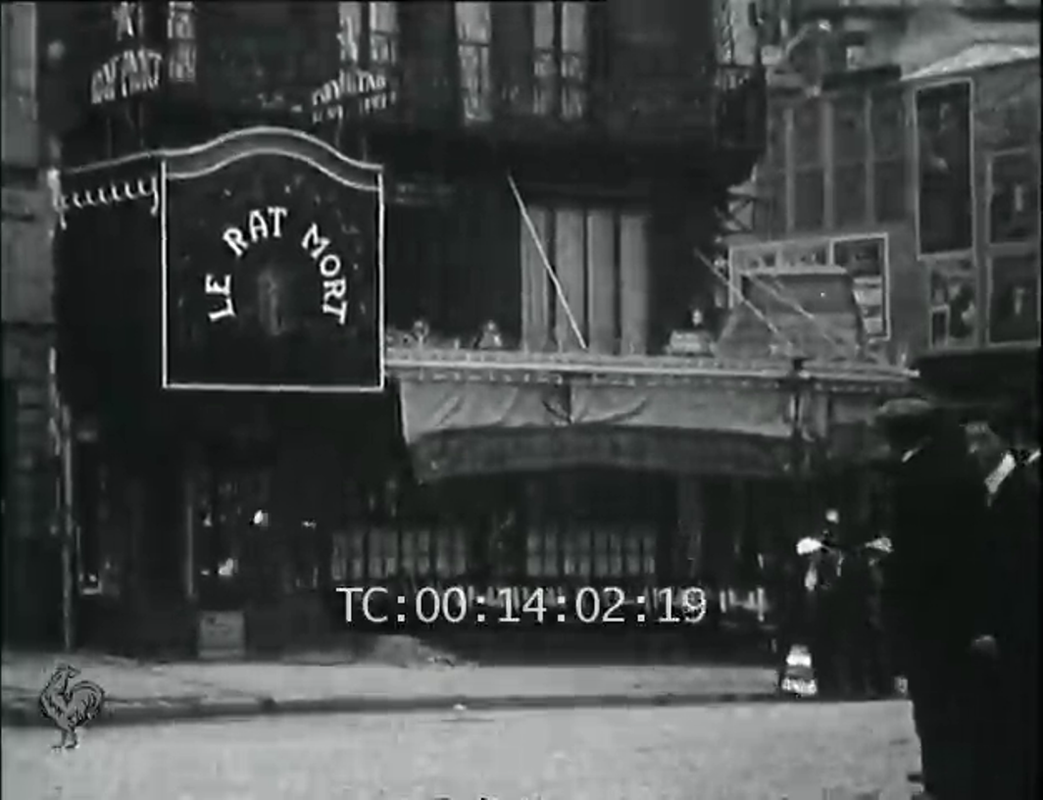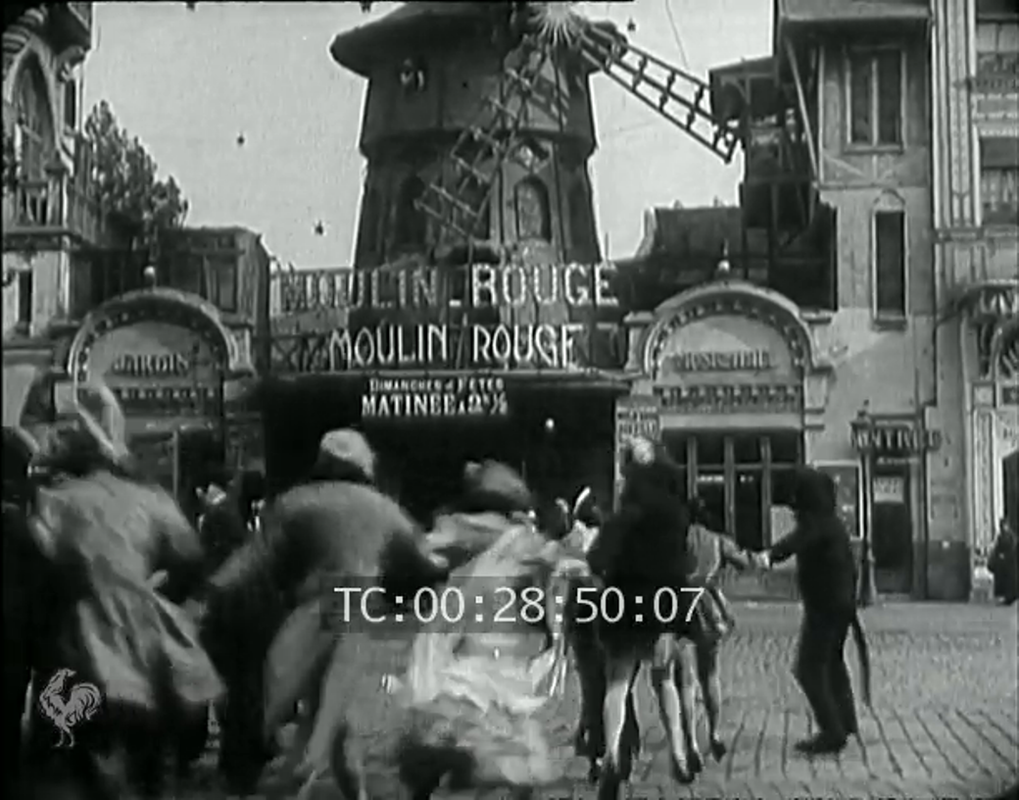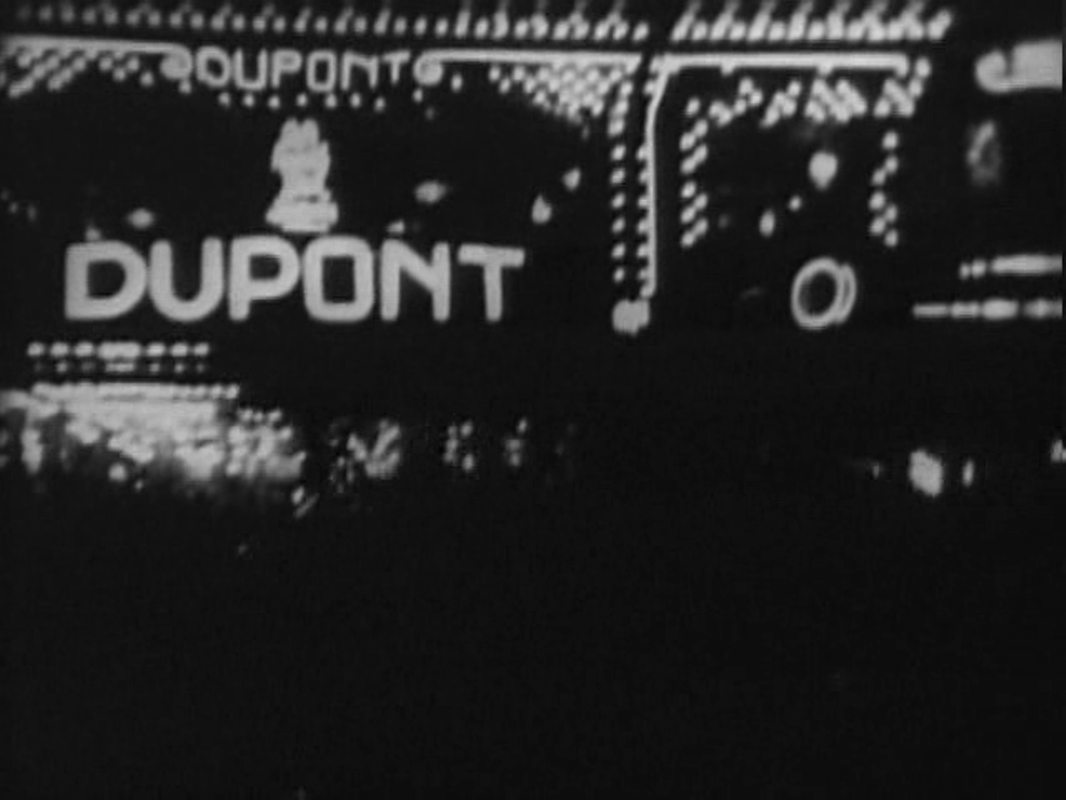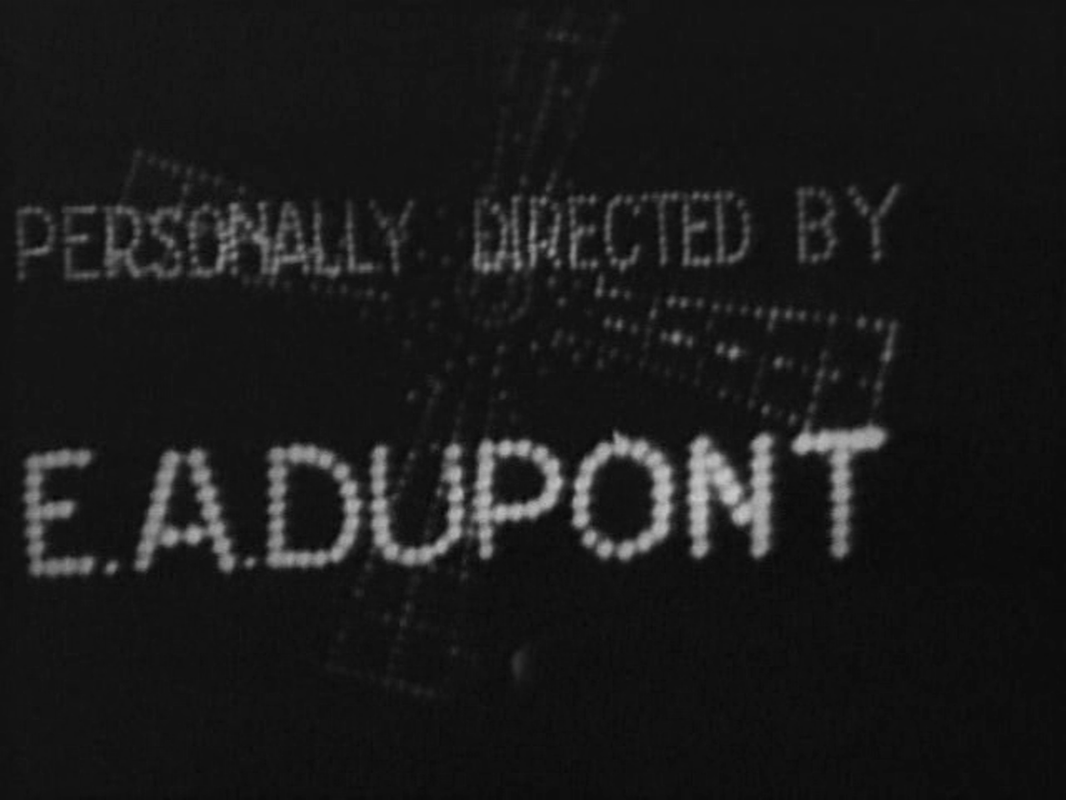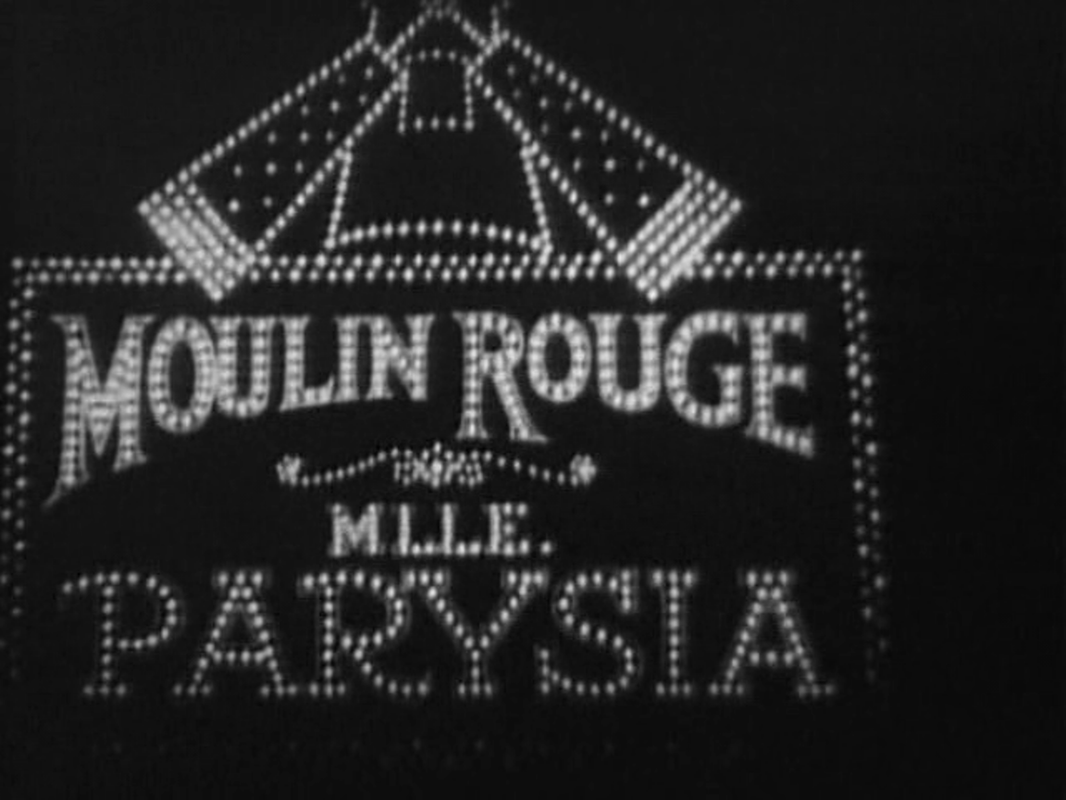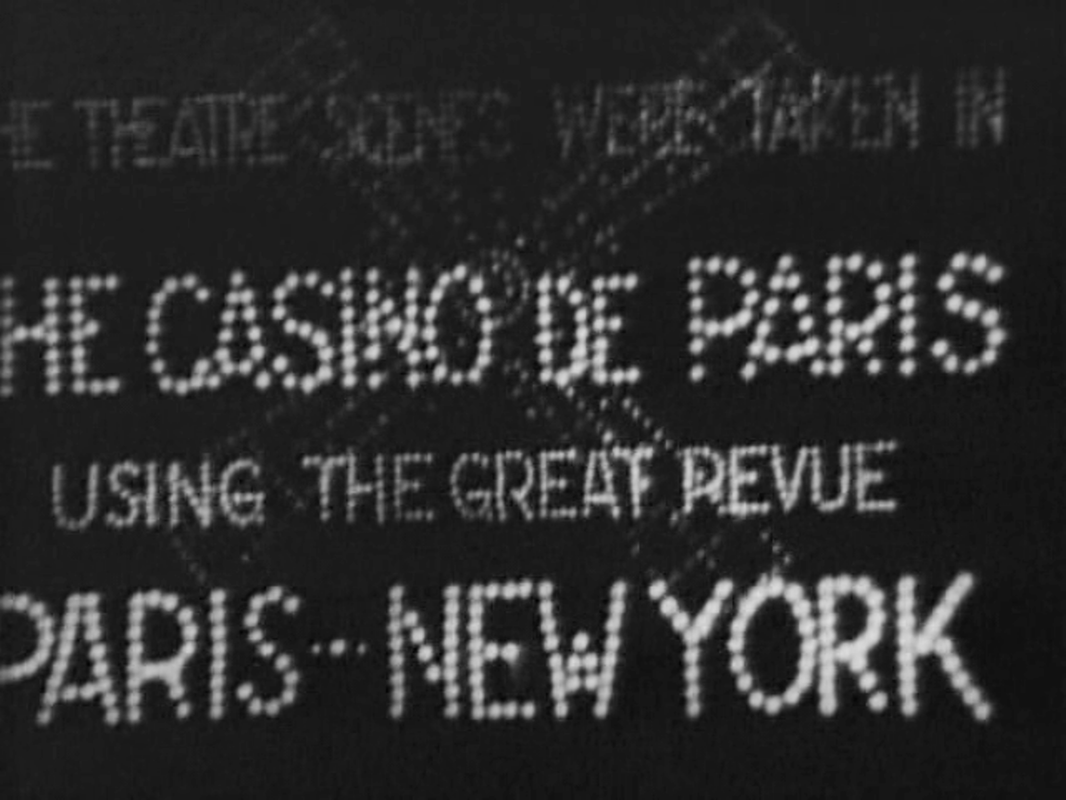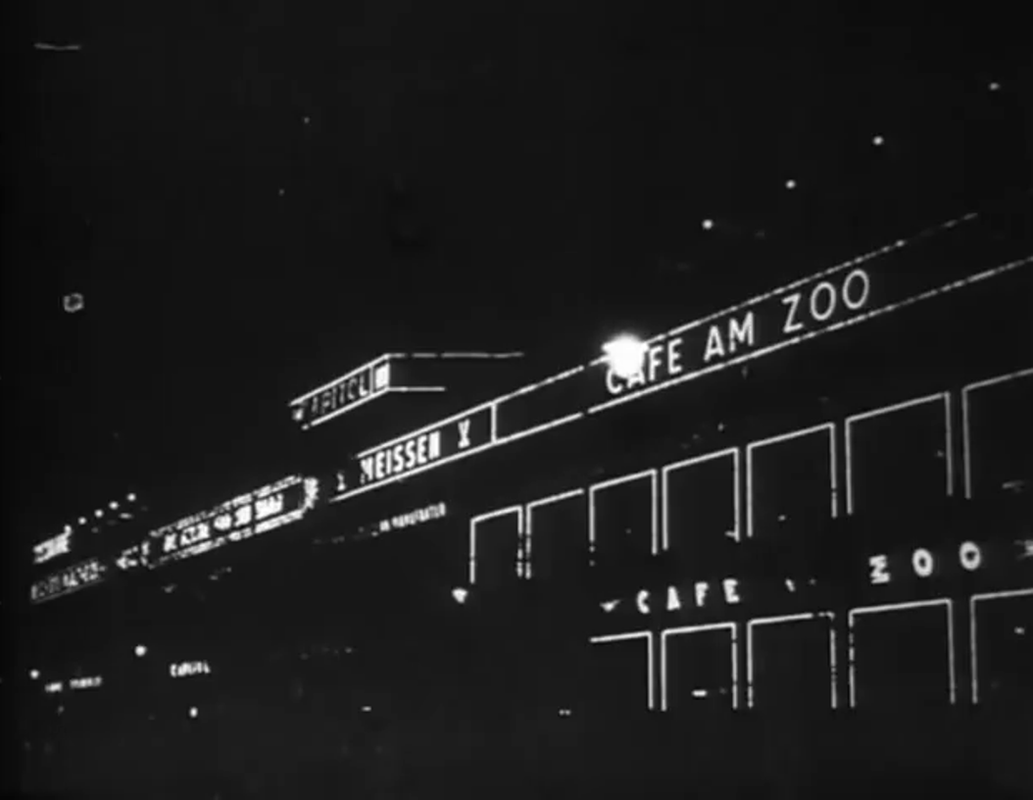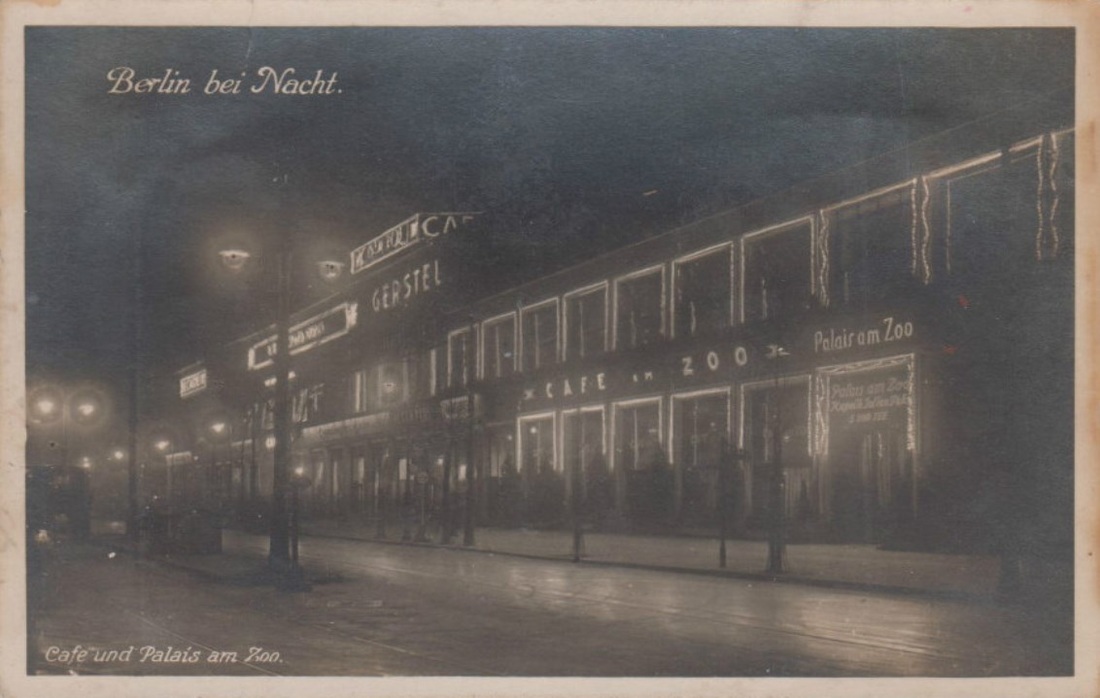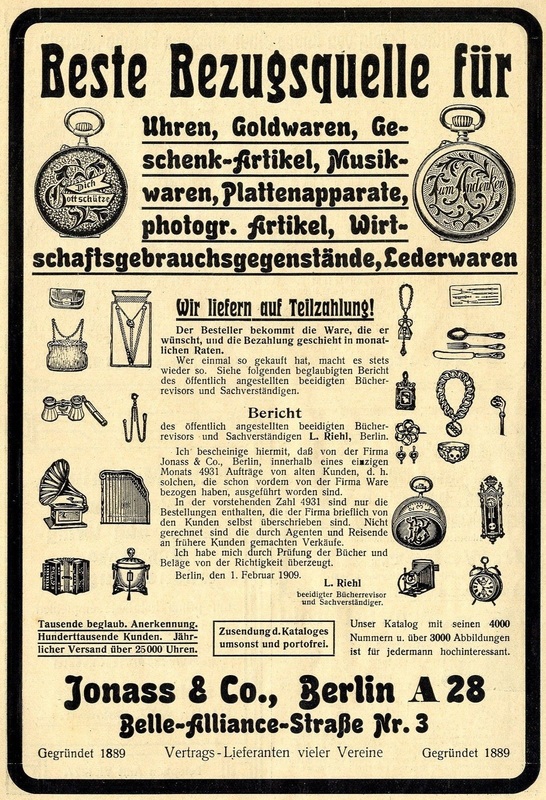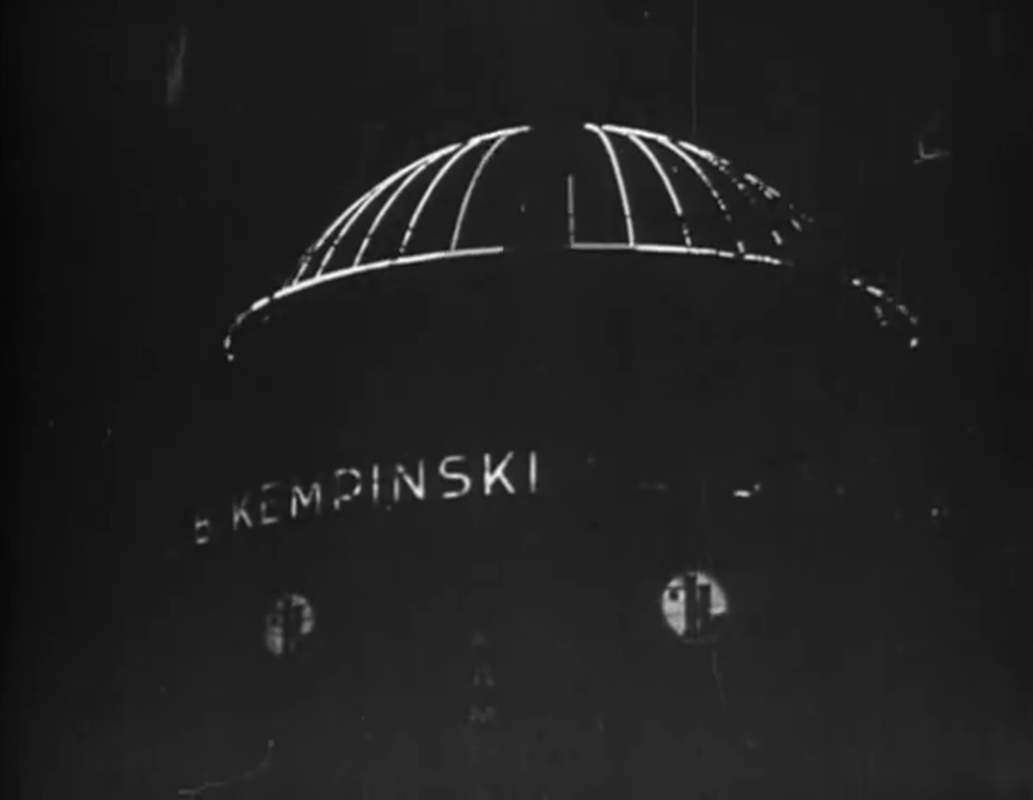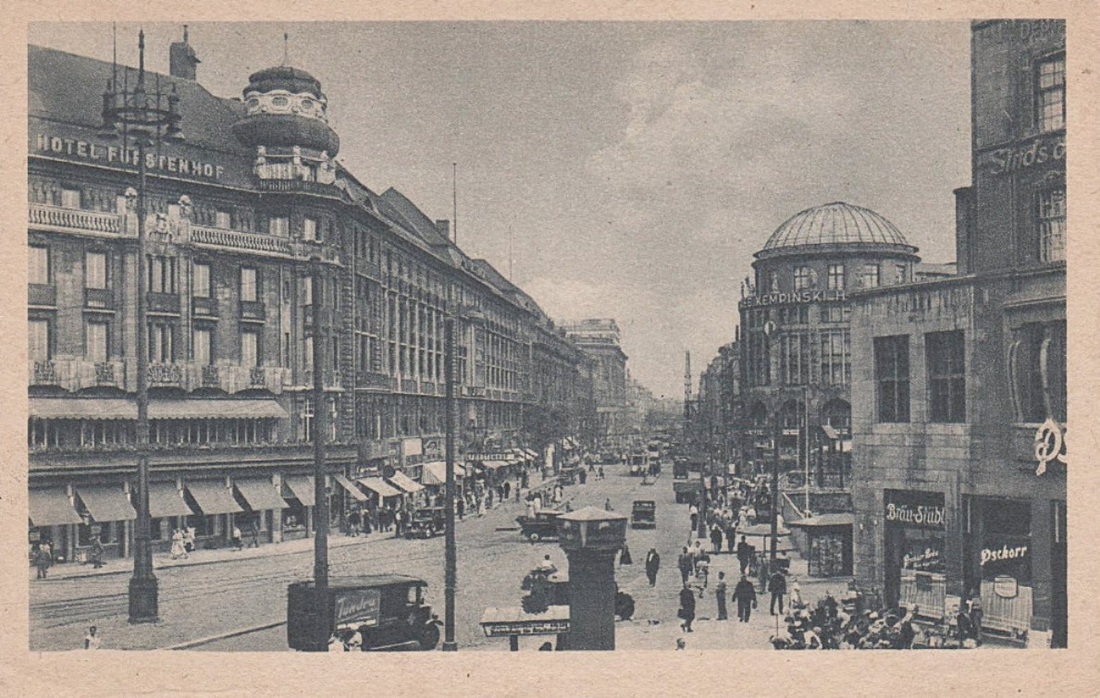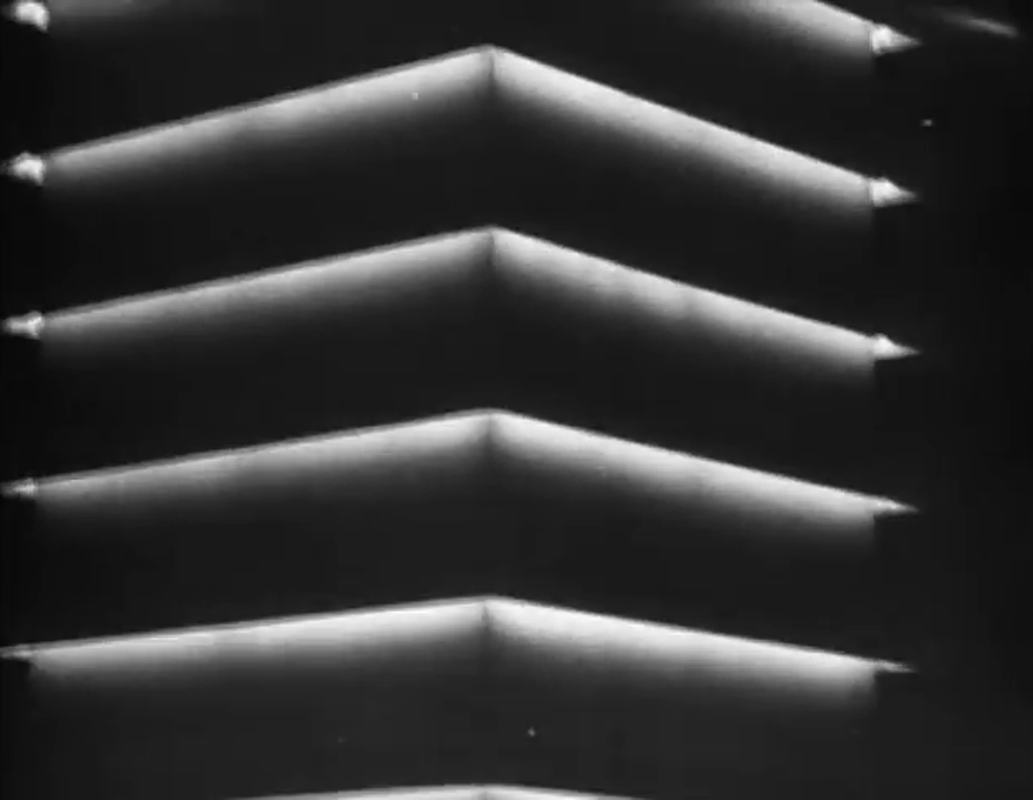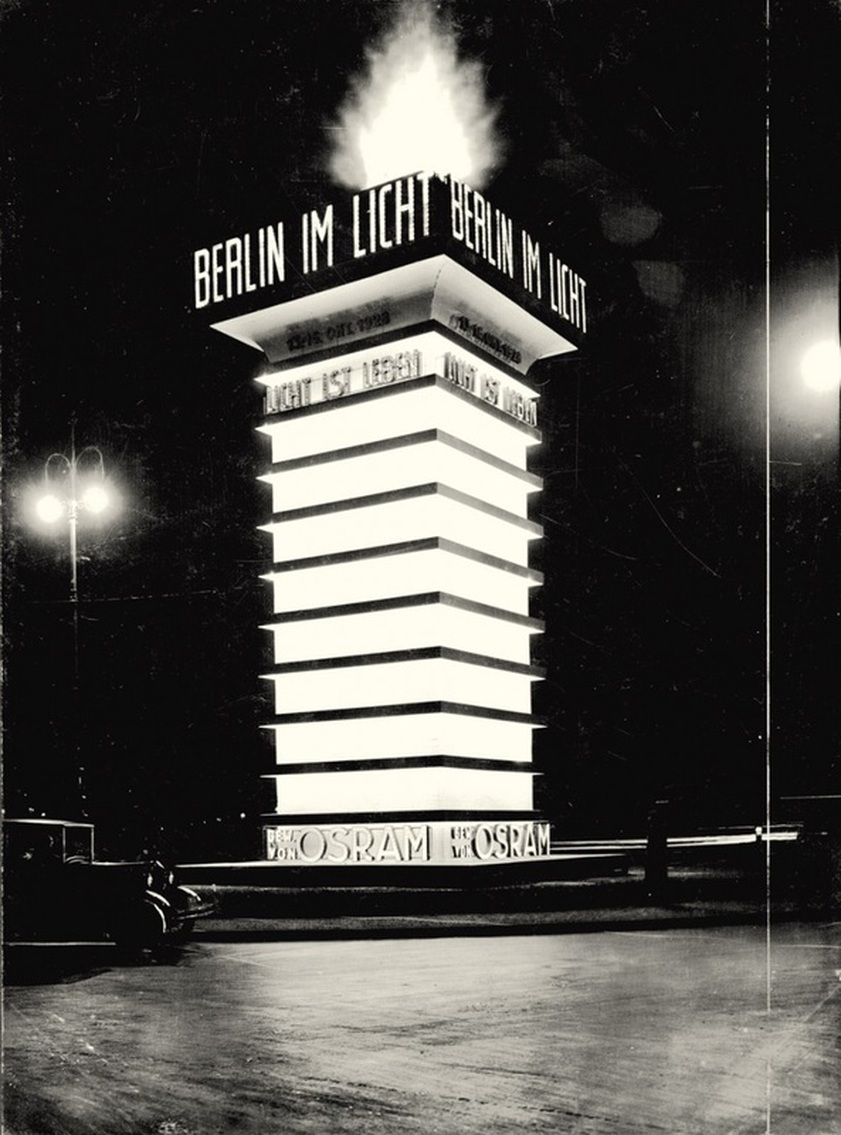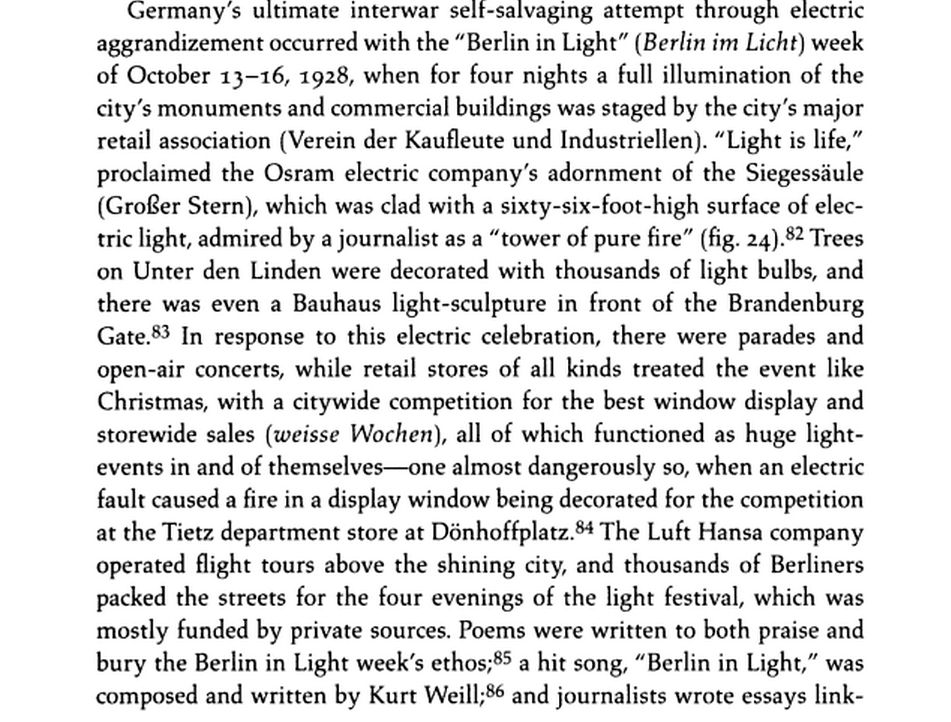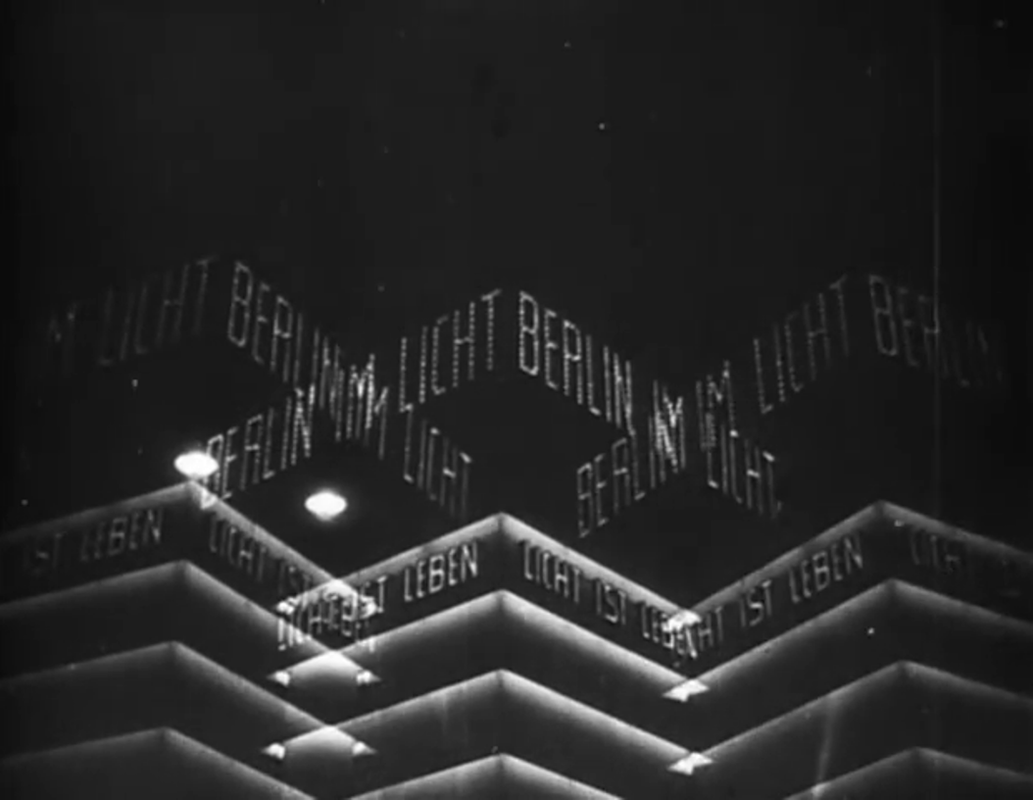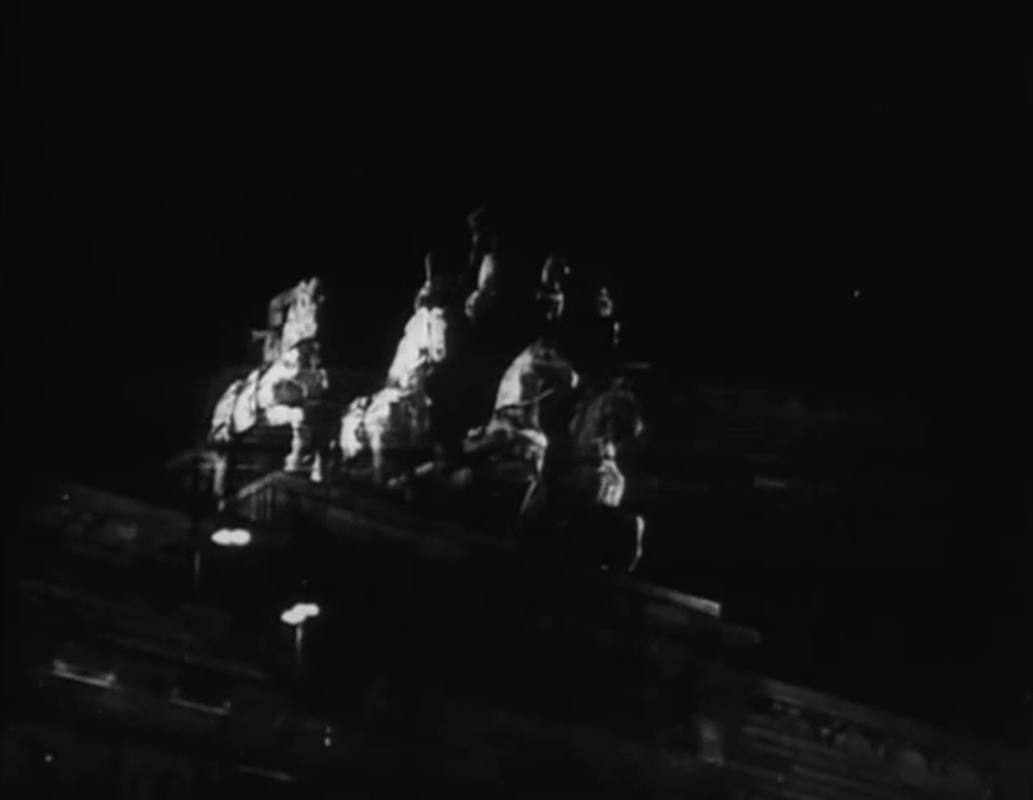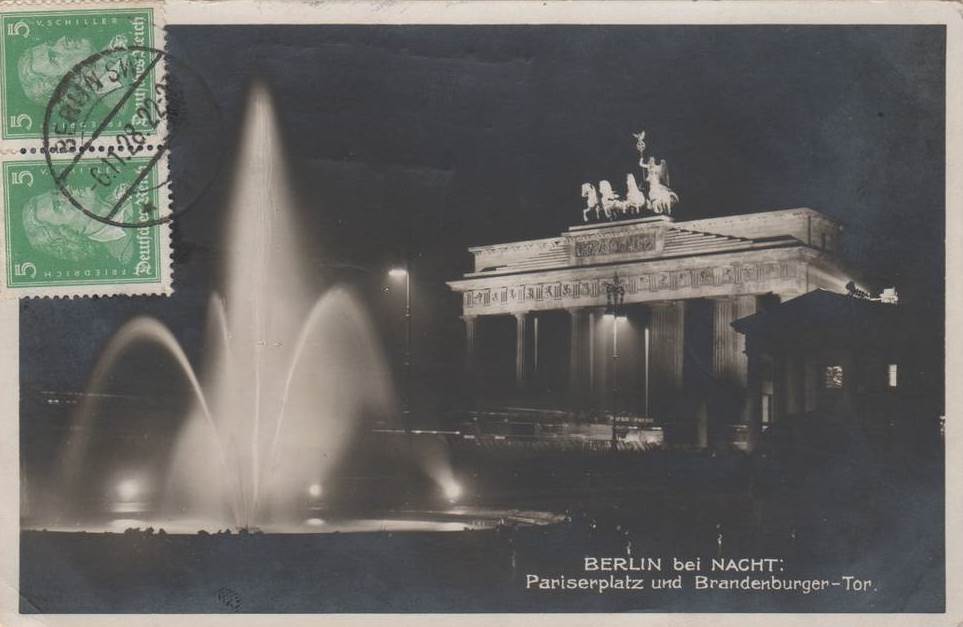electric nights in Paris (and Berlin)
In 1920s Paris, illuminated advertising in the night sky is emblematic of modernity and is presented as such in films of the period. Sometimes, as above, it is identified with the electric modernity of the cinema itself.
René Clair's Entr'acte (1924) uses focus adjustment and superimposition to transform the place de l'Opéra, in daytime dominated by Garnier's opera house, into an arrangement of lights in the night, dominated by an advertisement for the 'SOCIETE LAITIERE MAGGI'.
René Clair's Entr'acte (1924) uses focus adjustment and superimposition to transform the place de l'Opéra, in daytime dominated by Garnier's opera house, into an arrangement of lights in the night, dominated by an advertisement for the 'SOCIETE LAITIERE MAGGI'.
In Cavalcanti's Rien que les heures (1926) the signs are near-impossible to localise. CINEMA and BAL, abstracted from their topographical context, approach a degree zero of signage:
There is no cinematic manipulation here, and no second-degree signification. In contrast, Kirsanoff's Ménilmontant (1926) has a ten-second montage sequence that evokes urban distress through blurred nighttime signage superimposed on blurred daytime views:
The silhouette of the Opéra Garnier is recognisable and the signage can be localised. 'BAL', here, indicates the Bal du Moulin Rouge, place Blanche. We also see the sign for Le Rat Mort, a café-cum-cabaret on place Pigalle. Signage from these two locations reappears in films through the following decades, becoming in the 1950s a cliché of Paris By Night for photographers as well as filmmakers. Le Rat Mort became Eve, seen here in 1948 and 1960:
Here is the Bal du Moulin Rouge in 1953 and 1958:
The exteriors of Le Rat Mort and the Moulin Rouge had appeared in films before the 1920s, but none seems to have shown them illuminated at night. A crawl through Paris nightspots in Pathé's L'Attrait de Paris (1912) shows both venues, filmed in daytime - the sequence may originally have been tinted to suggest a nighttime setting, but that would not have made any electric signage more distinct. Similarly, Coeur de femme (1913) shows the Moulin Rouge in daytime:
It is the larger-scale narrative cinema of the late 1920s that best exploits the spectacle of Parisian signage, none more so than the 1927 Revue des revues in its opening montage:
Eighteen different establishments feature in this sequence, mostly in the Pigalle area though five are on the avenue de Wagram:
(I haven't been able to localise the 'Normandy' that appears just at the end.)
- Le Moulin Rouge (music hall) & Le Bal du Moulin Rouge (dancing), place Blanche - Mistinguett is appearing in the 1926 show 'Ca C'est Paris'
- Fantasio (dancing), 16 rue du Faubourg Montmartre
- Le Palace (music hall), 8 rue du Faubourg Montmartre - the boxer Georges Charpentier in the show 'Femmes et Sports'
- Le Casino de Paris (music hall), 16 rue de Clichy
- Le Gaumont Palace (cinema), 126 boulevard de Clichy
- Le Lutetia (cinema), 31 avenue de Wagram
- Le Royal (cinema), 37 avenue de Wagram
- L'Empire (music hall), 41 avenue de Wagram
- Le Rialto (dancing), 47 avenue de Wagram
- La Kermesse (casino), 47 avenue de Wagram
- Pigall’s (restaurant, dancing), 77 rue Pigalle
- Le New Monico (restaurant, dancing), 66 rue Pigalle
- Chez Lajunie (dancing), 58 rue Pigalle
- Le Rat Mort (restaurant, dancing), 7 place Pigalle
- L'Abbaye de Thélème (restaurant), place Pigalle
- El Garron (restaurant, dancing), 6 rue Fontaine
- Le Palermo (dancing), 6 rue Fontaine
- Le Tabarin (dancing), 36 rue Victor Massé
(I haven't been able to localise the 'Normandy' that appears just at the end.)
E.A. Dupont's Moulin Rouge (1928) also opens with a montage sequence of electric lights and signage from different parts of Paris:
The quality of the print makes some of these city lights hard to localise, though we can recognise the following:
I don't know which of the Dupont cafés it is that the director includes in this sequence but it is a neat joke to show his name inscribed in the city's topography after the credits had mimicked the city's fixation on electric signage:
- Les Grands Magasins du Louvre, rue de Rivoli
- La Jardinière, a restaurant on the place de Clichy
- Claridge's, on the Champs Elysées
- a Peugeot advertisement, avenue de l'Opéra
- Le Café de la Paix, place de l'Opéra
- Le New Monico and Pigall's, rue de Pigalle
I don't know which of the Dupont cafés it is that the director includes in this sequence but it is a neat joke to show his name inscribed in the city's topography after the credits had mimicked the city's fixation on electric signage:
This Elstree-made film has a peculiar relation to topographical authenticity. Despite the film's title, the actual Moulin Rouge does not appear in the City Lights sequence, where we might expect it. Nor, indeed, does it appear anywhere in the film, since its exterior is evoked only in crude imitations, as above and in this recurring insert:
And since, as the credits tell us, the interior of the Moulin Rouge is represented by another place entirely, the Casino de Paris:
Jean Gourguet's Rayon de soleil (1928) has a City Lights sequence near its close rather than at the beginning:
Some of these sights are familiar:
The most complete cinematic display of Paris's electric signage is Eugène Deslaw's 1928 exercise in 'pure cinema', Les Nuits électriques:
- La Salle Marivaux, cinema, boulevard des Italiens - playing the 1928 film Manege [Attractions], with Mary Johnson
- Le New Monico, rue Pigalle, and the cinema at 11 place Pigalle
- Le Moulin Rouge and the Bal du Moulin Rouge, place Blanche - Mistinguett in the 1928 show 'Paris Qui Tourne'
- Le Rat Mort, place Pigalle
- Au Sans Souci, Chez Lajunie, Pigall's and Le New Monico, all on rue Pigalle
The most complete cinematic display of Paris's electric signage is Eugène Deslaw's 1928 exercise in 'pure cinema', Les Nuits électriques:
One of the operative oppositions in the film is between pure patterns of light and decipherable text. Another key opposition comes from deciphering the texts. The first is HOTEL AM ZOO, the seconde LA ROTONDE: Deslaw's film moves between Europe's two Cities of Light, Paris and Berlin. In Paris we can localise the following:
Several of the signs in Berlin can also be attached to places, though locating them all is beyond my competence (I've never been to Berlin):
- La Rotonde, café, boulevard du Montparnasse
- Le Lutetia and Le Royal (cinemas), L'Empire (music hall), all on the avenue de Wagram (as seen before in La Revue des revues) and also Les Folies Wagram, a theatre playing Oscar Straus's operetta La Teresina
- LeThéâtre du Châtelet and Le Théâtre Sarah Bernhardt, the latter playing La Dame aux camélias
- La Coupole, café, boulevard du Montparnasse
- Le Lido, avenue des Champs Elysées
- Le Casino de Paris
- Le Bal du Moulin Rouge and Le Moulin Rouge
- Le Parc de Paris, part of the Luna Park, porte Maillot
- a Dupont café, the same one as in Moulin Rouge
- Les Galeries Lafayette, boulevard Haussmann
- Le Commodore, hotel, boulevard Haussmann
- Le Paramount, cinema, boulevard des Italiens
- the Peugeot advertisement, avenue de l'Opéra ( as seen in Moulin Rouge)
Several of the signs in Berlin can also be attached to places, though locating them all is beyond my competence (I've never been to Berlin):
This last image is as much associated with a specific time as with a specific place. Janet Ward in Weimar Culture (p.107) focuses on the moment to which the image belongs:
Deslaw's play with this image of electric light strongly thematises the premise of his film's title, but shifts the weight from that French promise to its German fulfilment:
It is possible that we remember from Les Nuits électriques only this, the textual affirmation of light as life, but in fact for the last five of the film's twelve minutes there is no illuminated signage, no text at all, in fact, just elaborate play with light in the real world of things rather than words. Among those real things is the closest thing in the film to the monumental, in the tourist guide sense - the Brandenburg Gate:
I don't know if any of the images that surround the Brandenburg Gate in Deslaw's film derive from the Bauhaus light sculpture that Ward tells us was in front of it for the 'Berlin im Licht' week. I have more research to do, and I'll be updating this post.
